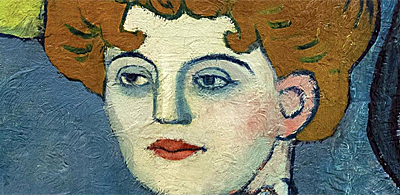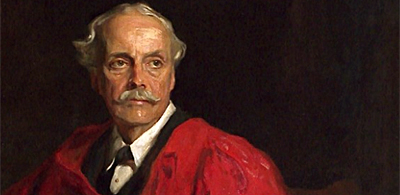Gustav Klimt: At The Getty
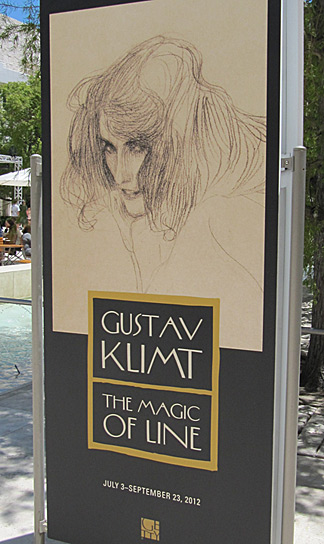
I had the good fortune to see Gustav Klimt: The Magic of Line, at the J. Paul Getty Museum of Los Angeles, California.
It is the first exhibition devoted exclusively to the drawings of the Austrian painter and leading member of the Vienna Secession movement.
Marking the 150th anniversary of Klimt’s birth, the Albertina Museum of Vienna, Austria, loaned over 100 drawings by the artist to the Getty, where the works will be on display until September 23, 2012.
A Getty staff person informed me that the exhibit has proven popular, with throngs of visitors being a daily occurrence. There is little wonder as to why.
This may well be one of the more unusual “reviews” of The Magic of Line exhibit, since it brings the reader’s attention to specific histories regarding a certain number of Klimt’s important works, narratives that the Getty/Albertina inexplicably did not present to the public at large.
I felt compelled to write this article when confronted with captions the Getty provided for Klimt’s so-called Faculty Paintings, descriptions that merely stated the works had been “destroyed in 1945,” while the catalog book mentioned that the paintings had been “burned in a fire.” Amazingly, no further details were offered – but more on that later.
It is an understatement to say the dazzling paintings by Gustav Klimt (1862-1918) are well known by many, especially his “golden paintings”; it is no surprise that droves would turn out for an exhibit of his art. But The Magic of Line is not a celebration of the artist’s opulent canvases, rather, it is an examination of Klimt’s black and white drawings, many of which were studies for paintings. Some will no doubt be disappointed that there are but two small paintings in the entire exhibit, a diminutive gouache and watercolor titled The Auditorium of the Old Burgtheater (1888-1889), and an oil study for Medicine, one of the large scale canvases comprising the artist’s Faculty Paintings that the Getty/Albertina asserted burned in a fire.
For those artists like myself who busy themselves with creating works of narrative realism, drawing as the very foundation of art is a fundamental principle, and in The Magic of Line one can see how that tenet guided Klimt’s hand in the making of his paintings. Many will be shocked to see Klimt’s academic background in the 1888-1889 sketches he drew as studies for Shakespeare’s Theater, a fresco he painted on the ceiling of the Burgtheater in Vienna. These six black chalk drawings, with highlights of white chalk, are precise, meticulous portraits; they are renditions of the human form that reveal the touch of a master artist.
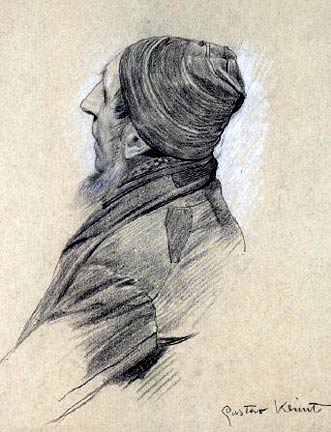
I gazed intently at Klimt’s Shakespeare’s Theater drawings for some time, in awe of how he captured almost photographic realism with minimal effort; a three quarter view portrait or a “lost profile” captured with a few scant chalk lines – how well Klimt knew human anatomy!
That he eventually reduced his drawing style to the barest minimalism, makes his early drawings the best evidence that an artist must know the rules in order to break them.
Klimt’s eventual approach to drawing is exemplified in his five sketches of Mäda Primavesi, the nine-year-old daughter of Austrian banker, Otto Primavesi. The drawings were studies for an oil portrait executed in Klimt’s highly stylized manner; what makes the studies so remarkable is that they bear little resemblance to the finished painting.
Bereft of shading, modeling, and details normally associated with portraits, the artist’s scribbling nevertheless captured the essence of his young sitter. The lines in Klimt’s sketches are energetic, jangly, nervous, and broken. His squiggles have all the appearance of automatic writing – the strokes and dabbles unconsciously drawn at a séance by someone possessed. That such spareness showed the way to a fully realized and complex portrait is astonishing. Most of Klimt’s late drawings display this same quality.
Contemporary viewers see Klimt’s works from a modern standpoint, accepting his aesthetics and subject matter as pleasant and agreeable. His erotic sketches seem tame by today’s standards, reinforcing the notion that Klimt’s works were uncontroversial for his time, which was not at all true. What fails to come across in The Magic of Line is the outrage expressed by “polite society” towards Klimt’s art. A founding member of the Vienna Secession in 1897, Klimt and his fellow Secession artists meant to upend academic conservatism in the arts; the Secessionists wanted a “revolution” in art, but not one in any overt political sense.
I feel disquietude concerning the Getty/Albertina failing to put Klimt in the context of the reactionary Austro-Hungarian Monarchy (1867-1918) under which he lived. Austria-Hungary was an imperialist world power during Klimt’s lifetime, and its aristocracy was opposed by many bourgeois political factions hoping to unseat the aristocratic class – if only to step into their shoes. Industrialization, capitalist production, and technological developments changed the face of the absurdly outdated empire, and the Secessionists were part and parcel of the forces seeking reform.
The Austro-Hungarian Empire’s internal and external tensions could not help but impact Klimt and his fellow artists, though The Magic of Line neglected to point out how. The June 28, 1914 assassination of Austria’s Archduke Franz Ferdinand, heir to the Austro-Hungarian throne, led to the eruption of World War I (1914-1918) exactly one month later. The war claimed the lives of 37 million civilians and soldiers across Europe and brought about the dissolution of the Austro-Hungarian, Russian, Ottoman, and German empires. Klimt did not live to see the total ruin wrought by the conflict, but as his country rushed headlong into World War I, his work turned somber. None of this is mentioned in The Magic of Line.
These minor criticisms pale in comparison to the details that follow, the particulars of which drove me to write this article. The exclusions made in the exhibit are curious, begging the questions, who made them and why? For those reasons the focus of my commentary is an attempt at revealing omitted histories.
The Magic of Line exhibit and accompanying catalog contain omissions having to do with Klimt’s Faculty Paintings. Preliminary sketches for those paintings, plus an oil study for one of them – Medicine – comprise a key portion of the Getty/Albertina exhibit. Yet, when mentioning the ultimate fate of the Faculty Paintings, the exhibit’s wall text and book state that in 1945 the works were either “destroyed” or “burned in a fire.” The destiny of Klimt’s trio of paintings was far more complicated, and tragic, than that; the paintings were willfully destroyed by the Nazis at the close of World War II.
The following places Klimt’s Faculty Paintings in their proper historic context while tracing their chronicles, from being rejected by the University of Vienna, to their ultimate destruction by the collapsing Nazi regime.

In 1894 Klimt received a commission from the University of Vienna for three massive canvases to adorn the ceiling of the Great Hall at the university, the Faculty Paintings.
Between the years 1900-1907, Klimt presented his paintings, Philosophy, Medicine, and Jurisprudence, to the University – but the works were scorned as obscene. More than eighty members of the University’s faculty expressed indignation over the “perverted” canvases.
Needless to say, the paintings were not hung in the Great Hall as originally intended.
Klimt tried to abrogate his contract with the university and pay back the commission money; even as the university refused to mount the canvases, it also declined to return the works to Klimt, asserting the paintings were the property of the state. The controversy was distressing for Klimt and he never again accepted a government commission.
Eventually one of Klimt’s devoted patrons, the industrialist August Lederer, purchased Philosophy, and Lederer would ultimately end up owning the paintings Medicine, and Jurisprudence as well.
August Lederer (1857-1936) and his wife Serena (1867-1943) befriended Klimt and became major collectors of his art; the two continuing to collect the artist’s works long after his death in 1918. The couple were part of Vienna’s dynamic Jewish community, where Klimt had found many patrons and collectors, not to mention models, portrait subjects, lovers, and intellectual counterparts. Vienna was a city where a great number of prominent and successful Jews chose to settle; but the darkest of nights would soon befall them.
On March 12, 1938, Nazi Germany invaded and “annexed” Austria in a campaign the fascists called “Anschluß” (political union). Hitler’s military occupation would last until March 28, 1945. In the immediate aftermath of the Nazi invasion, Austrian government officials and tens of thousands of Social Democrats, Communists, Socialists, and Jews were arrested. As the occupation intensified, those able to go into exile did so, but most of those targeted by the Nazis and their Austrian fascist collaborators were either killed or sent to concentration camps.
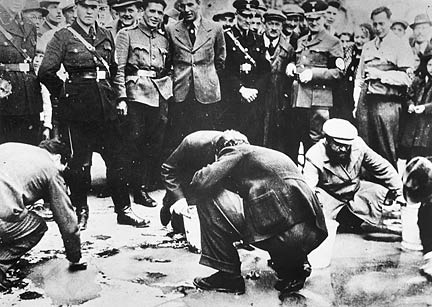
Jews in Vienna were made to scrub sidewalks, their homes and businesses were looted, their synagogues destroyed. In May of 1938 the Nazis implemented “racial laws” in occupied Austria, stripping the Jewish people of their civil and human rights and forcing them to wear yellow stars.
The Nazis “encouraged” 130,000 Jews to emigrate, commandeering their property and depriving them of Austrian citizenship in the process; the Nazis considered their stolen Jewish property to have been “Aryanized”.
In 1938 the Gestapo seized a number of important art collections from Jewish owners, amongst these the holdings of the Rothschild family, as well as those of the banker Herbert Gutmann and the industrialist Oskar Bondy. Also commandeered were the collections of August and Serena Lederer, which contained a large number of Klimt’s artworks. August had died two years before the Nazi invasion, and after the Lederer collections were confiscated, Serena fled to Budapest.
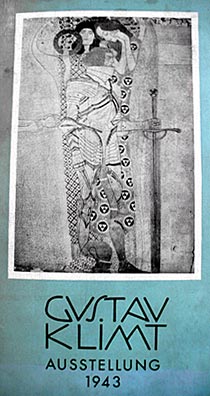
Incredibly, Hitler’s appointed “Reich Governor” of Vienna, Baldur von Schirach, staged a major exhibit of Klimt’s artworks in occupied Vienna on February 7, 1943 – around the same time that he was deporting some 65,000 of Vienna’s Jews to death camps in Poland! The Gustav Klimt Ausstellung (Gustav Klimt Exhibition) was comprised of 66 paintings and 34 drawings by Klimt, most of which came from the Nazi confiscated Lederer collection.
In her article Klimt’s Last Retrospective, art historian Monica Strauss said of the Nazi exhibit: “Though nominally a celebration of what would have been the artist’s 80th year, the exhibition was more accurately a display of looted art.”
Given that the Nazis declared all forms of modern art to be degenerate, Schirach’s Klimt exhibit was certainly a deviation from official Nazi policy, but then, Schirach could afford to be eccentric. He was married to the daughter of Hitler’s official photographer, and up until 1940 he had been the appointed leader of the eight million strong “Hitler-Jugend” (Hitler Youth), the official Nazi paramilitary youth organization.
At the start of 1940 Schirach enlisted as a volunteer in the German army and served as an infantry officer in Nazi occupied France; later that year he was appointed Reich Governor of Vienna.
I should note that after the war Schirach was tried before the Nuremberg war crimes tribunal and found guilty of deporting 65,000 Viennese Jews to Nazi death camps in Poland; he was sentenced to 20 years in Spandau Prison.
At the close of Schirach’s Klimt exhibit, Hitler’s “thousand year Reich” was crumbling. The Soviets had won the Battle of Stalingrad against the Nazis – marking the turning point in World War II. The Nazis began to prepare for “total war” with the Allied powers and the Soviets, which led the Nazis to secretly warehouse their looted art treasures taken from all across Europe.
Some of the Nazis’ stolen treasures where kept in tunnels at the Altaussee salt mines located in an alpine village of Austria; most of the artworks in the mines were of Austrian origin – over 7,000 looted objets d’art were stored there. The plunder at Altaussee included the likes of The Astronomer by Vermeer, The Ghent Altarpiece by brothers Hubert van Eyck and Jan van Eyck, and The Madonna of Bruges by Michelangelo. The Lederer collections, which included Klimt’s drawings and canvases for the Faculty Paintings, were transported by the Nazis from Vienna to Schloß Immendorf (Immendorf Castle), located in the Northeast of Lower Austria.
The Nazis warehoused stolen artworks for two reasons. “Degenerate” and “un-German” works were sorted out and sold on the international market for profit. Works the Nazis viewed as iconic of “Aryan superiority” were to be integrated into the Führermuseum, an immense arts complex and repository for all of the art plundered by the Nazis throughout Europe. Hitler wanted the museum constructed in the Austrian city of Linz, which he considered to be his hometown, but fortunately the institution was never built. The Nazi playwright and “Poet Laureate” Hanns Johst wrote a line of dialog in his play, Schlageter that has some relevance here: “Whenever I hear of culture I release the safety-catch of my Browning!” Those few words best embody Nazi thinking vis-à-vis the arts.
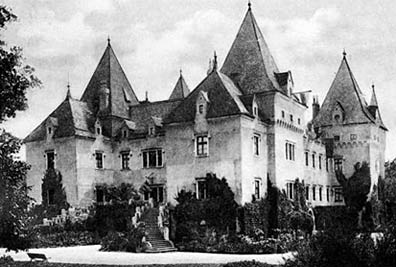
On May 7, 1945, the Nazis signed a formal declaration of surrender with the Soviets and the Allied powers. Barely a week earlier Hitler had committed suicide after the Soviets broke through Nazi defenses to attack Berlin.
To prevent Immendorf Castle and its cache of stolen art from falling into Soviet hands, a division of the Nazi SS placed explosives in the castle on May 8th and then detonated the demolition charges.
The blasts destroyed much of the castle and the ensuing fire burned for days. It was not just the Lederer collection that was obliterated; everything within the castle was destroyed, including significant paintings by Egon Schiele and the collections of the Museum for Applied Arts of Vienna as well as the collections of the Austrian Gallery.
The story of the Faculty Paintings did not end with their destruction at the hands of the SS. Starting in the mid-1980s some Austrians began a serious reconsideration of their nation’s past, resulting in a flood of critical research and articles. In 1985 Austrian journalist Hubertus Czernin (1956-2006) began looking into the personal history of Kurt Waldheim (1918-2007), who was then seeking election as President of Austria and had previously served as the Secretary-General of the United Nations from 1972 to 1981.
Czernin and other Austrian journalists uncovered the fact that Waldheim had been a Nazi officer in a German army unit that had carried out massacres against Serb civilians in Yugoslavia during World War II. The facts did not prevent Waldheim from being elected President of Austria in 1986, but the story crippled his presidency while opening a path to further investigations into Austria’s Nazi past.
The 1998 New York Times article, Austria Is Set to Return Artworks Confiscated From Jews by Nazis, reported that the Austrian government bowed to international pressure in ’98 by arranging the return to Jewish collectors of some 100 artworks held by Viennese museums. As Hubertus Czernin wrote, “The art was stolen by the Nazis and stolen a second time by the Austrian Government.” The NYT also quoted Konrad Oberhuber (1935-2007), director of the Albertina Museum from 1987-2000, saying the post-war Allied Commission “came to the museum” and “declared there were no problems with the provenance of drawings and graphics in the collection.”
However Mr. Czernin, the NYT wrote, “did not believe the commission had ever been at the Albertina.” The paper also quoted the Baroness Bettina der Rothschild, who said the Albertina had “a lot of our things.”
An excellent article on the subject of art looted by the Nazis and the attempts to return those works to their original Jewish owners, is the research paper From ‘Legacy to Shame’ to the Auction of ‘Heirless Art in Vienna’: Coming to Terms ‘Austrian Style’ with Nazi Artistic War Booty, written in 1999 by Oliver Rathkolb, Professor of Contemporary History at the University of Vienna. Rathkolb’s paper is an eye-opener when it comes to describing, in the author’s words, “the rather shabby habit of restitution after 1945” that had been conducted by Austrian authorities.
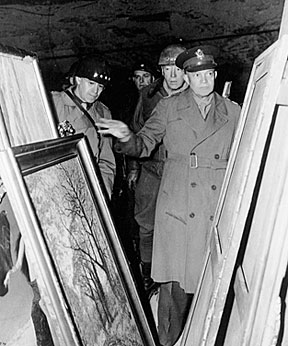
After the May 7, 1945 Nazi surrender, Allied armies poured into Austria. The section of the U.S. army that searched for looted art treasures, the Monuments, Fine Arts, and Archives (MFAA) unit, spearheaded a hunt across Europe for artworks plundered by the Nazis.
The MFAA located hidden repositories of stolen artworks in Germany as well as in the salt mines of Altaussee and other locations in Austria.
In time the post-war U.S. authorities in Austria turned over the objets d’art to the new Austrian government, which did little to determine the provenance of the works, or arrange for the return of individual artworks and collections to scores of Jewish owners or their descendants. Many of these artworks, plundered from Jewish collectors, simply ended up in Austria’s museums, where some remain to this day.
Art historian Sophie Lillie has played an indispensable role in discovering and presenting the facts regarding art plundered by the Nazis having ending up in Austrian museums. Her 2003 book, Was Einmal War (What Once Was), documented the Nazi theft of Jewish art collections in Austria. Ms. Lillie provided substantial evidence that the Nazis stole 148 major collections; she also exposed the fact that artworks taken from Jewish owners by the Nazis ended up in the collections of major Austrian art institutions like the Leopold Museum, the Kunsthistorisches Museum, and yes… the Albertina museum.
In February of 2009, ARTnews published The Mauerbach Scandal, an informative article about the ongoing work of Sophie Lillie and others who seek the return of cultural property once stolen from Austrian Jewry by the Nazis and now held by Austrian museums and private collectors.
The ARTnews article stated that the Austrian government “made no effort to find the rightful owners of the objects until 1969,” and that government archival documents that could prove rightful ownership of art objects were opened “only in 1998, after the Federal restitution law was adopted by the Austrian parliament.” The ARTnews article concluded by saying that regarding Jewish ownership of paintings and art objects once plundered by the Nazis, Ms. Lillie “believes that the responsibility for concealing information about their ownership rests with the Austrian state.” ARTnews also noted that Austria’s Ministry of Finance, which had control over the “ownerless” artworks for years… did not return phone calls from the arts publication.
Given the track record of the Austrian state and museum system – it should come as no surprise that the Albertina Museum would fall silent on the ultimate fate of Klimt’s Faculty Paintings. To avoid even a whiff of controversy, perhaps someone “thought it best” to merely say the paintings were burned in a fire. It is after all a touchy subject that leads directly to the history of the Austrian state’s reluctance to return art treasures stolen by the Nazis from Austrian Jews.


